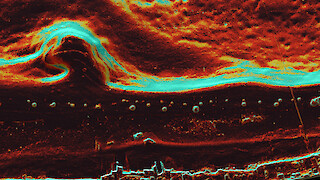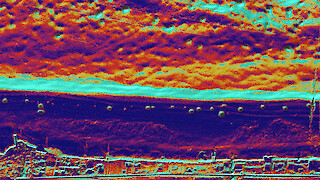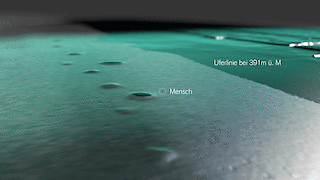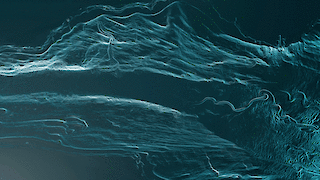When locations are difficult to access, three-dimensional terrain data provide the only visually linked information. How does their representation influence archaeological hypothesis building? This exploratory search for answers uses multibeam echosounder data from the so-called «Bodensee-Hügeli», a series of ancient, man-made piles of stones in Lake Constance.
Methods of three-dimensional landscape surveying have been used in archaeology for just a decade. They help to document archaeological sites and also make it possible to draw conclusions about these sites’ former significance. Conspicuous structures in the 3D data sets are analysed in-depth and often are the only source of information about a newly discovered archaeological site. This M.A. project explores how such survey data need to be represented and conveyed in order to ensure an accurate scientific process and foster knowledge gain, based on 3D models of the «Bodensee-Hügeli», an underwater archaeological mystery.
In her M.A. dissertation, Livia Enderli provides a very detailed study of conventional archaeological research processes and, in particular, a careful reflection on the representation of three-dimensional landscape survey data. A sophisticated use of imaging techniques, the creation of data-based model visualisations and 3D visualisation experiments all contribute to the successful treatment of complex data from scientific landscape surveying. Visually, these become accessible here in ways that have not been experienced before by archaeologists.
«My project supports a scientific research process through design methods, offers holistic solutions, connects several disciplines, and presents the topic and relevancy of data visualisation in a new light.» – Livia Enderli
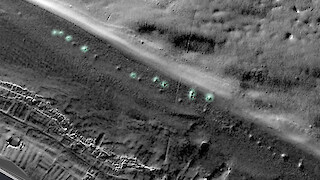
By carrying out many different design experiments and image analyses and using elaborate survey methods, data visualisations and virtual model making, Livia Enderli was able to stimulate and promote an interdisciplinary research dialogue. She also made the resulting image designs, data visualisations and partly interactive visual models available to researchers in a suitable format on a specifically devised platform. As this project has shown, the research discourse can be boosted by an interdisciplinary approach and the principle of hypothesis building and argumentation, leading to new and surprising scientific knowledge and illuminating insights.
Project partners:
Archaeological Office of the Canton of Thurgau
«In future, I see myself in a role at the interface between different disciplines, transferring content from one language or convention to another to ensure optimum understanding, which in turn will lead to improved results.» – Livia Enderli
